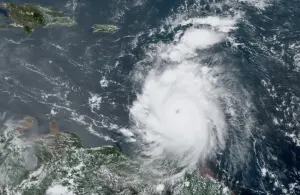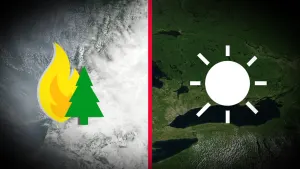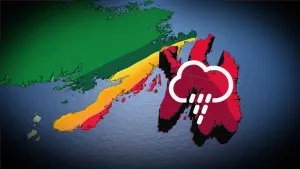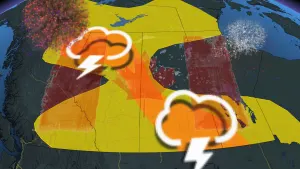
An iceberg in B.C.? Lingering mirage leaves photographer stumped
Simone Engels had cast her eyes across the waters of the Strait of Georgia from a beach on Vancouver Island when she caught a glimpse of something bright and shiny on the horizon.
She'd come to Moorecroft Regional Park in Nanoose Bay, B.C., on Sunday to photograph the mountains on the mainland in the sunset of a beautifully clear winter day, but the object in the distance didn't look like any mountain she recognized.
Engels raised her camera to get a closer look.

The 'iceberg' that Simone Engels photographed from Nanoose Bay, B.C., on Jan. 9 was actually a superior mirage of the peaks of the Cheam Range, about 180 kilometres away. (Submitted by Simone Engels via CBC News)
"I zoomed in on it and I could not believe what I was seeing, because it looked like there was a huge iceberg floating by," she told CBC News.
The sighting, first reported by NanaimoNewsNOW, seemed impossible, but the object remained on the horizon for a full half hour as Engels stayed on the beach.
When she posted a photograph on social media, everyone was convinced it was an iceberg — even a friend who'd studied iceberg geomorphology for her PhD, Engels said.
"I was very stumped," she said. "We don't generally see icebergs here."

The superior mirage she captured can be seen at left. Mount Baker in Washington State is on the right. (Submitted by Simone Engels via CBC News)
SEE ALSO: Spectacular display of Fata Morgana seen over southern Alberta
It turns out Engels had captured images of an exceptionally clear optical illusion.
"It's not an iceberg," said Colin Goldblatt, an associate professor of atmospheric science at the University of Victoria.
"It's a beautiful photograph, and what we're seeing is a lovely example of a superior mirage."
He explained that this kind of mirage is possible during an atmospheric inversion, when warm air is sitting on top of a layer of cooler air, causing the light to bend downward.
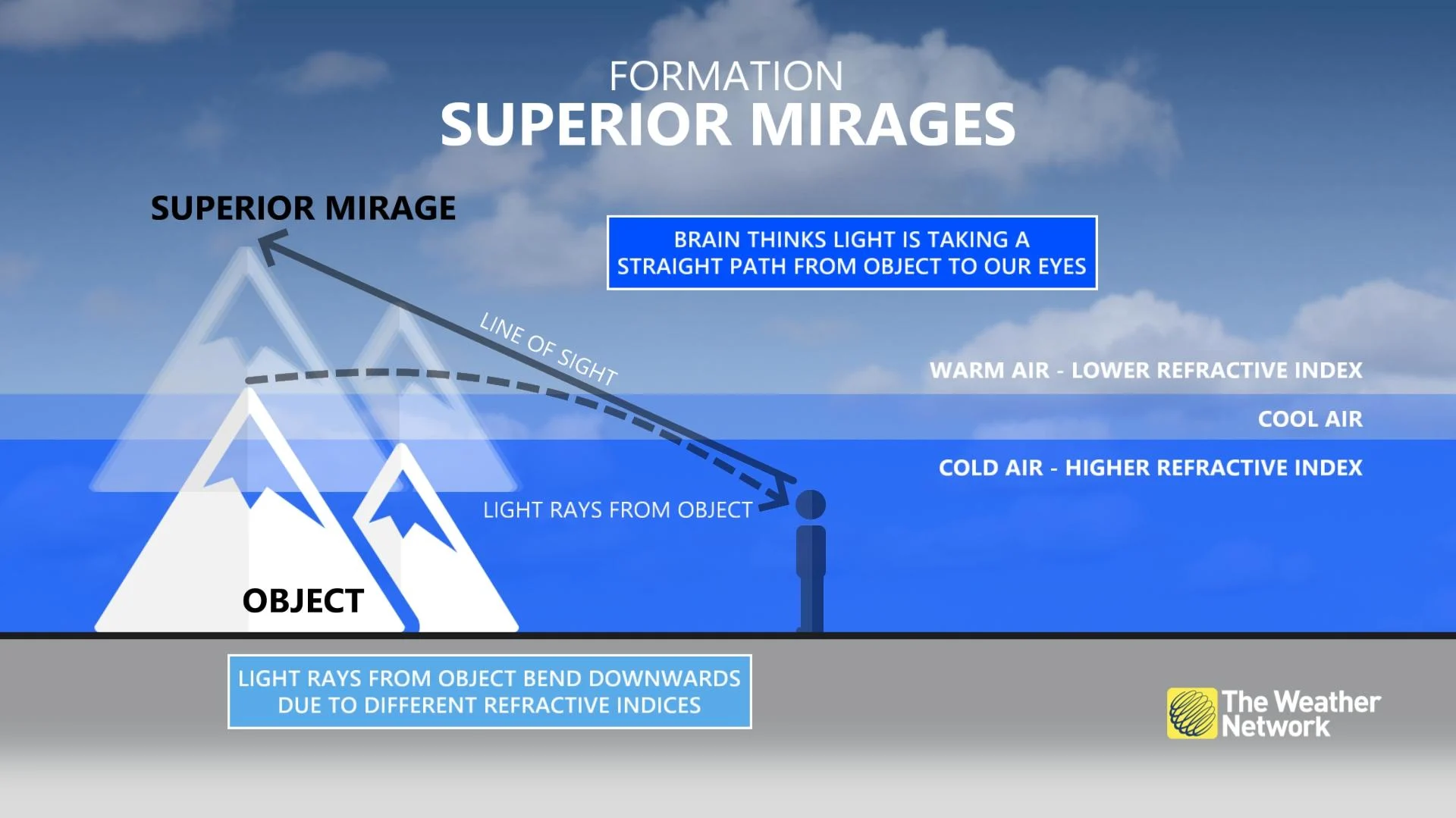
WEATHER PATTERN CAUSED LIGHT TO BEND
What Engels was seeing was the peaks of the Cheam Range near Chilliwack, more than 180 kilometres away. Normally, these mountains would be on the other side of the horizon, hidden by the Earth's curvature and invisible to someone in Nanoose Bay.
"We can see it because of the bending of the light in the atmosphere," Goldblatt said.
In this case, Sunday's dry conditions allowed for a particularly crisp and clear mirage.
According to Goldblatt, mirages are a much more common phenomenon in B.C. waters than the average landlubber might realize.
RELATED VIDEO: HOVERING SHIP PHENOMENON LOOKS GHOSTLY, BUT IT'S SIMPLE SCIENCE
"We actually see mirages a lot. I see them when I'm out kayaking or sailing on the Salish Sea," he said, referring to coastal waters off B.C.'s south coast.
Apart from superior mirages, like the one Engels captured, there are also inferior mirages, where something like a ship might appear to be flipped upside down. Goldblatt explained that an inferior mirage happens when a layer of colder air sits on top of warmer air near the ocean's surface.
Nonetheless, for Engels, an avid photographer who tries to get outside in nature as much as she can, the experience was unique.
"I will definitely enlarge this photo and put it up on my wall," she said.
This article was originally published on CBC News on January 14, 2022. Contains files from Jessica Cheung.






